The European Union's advisory board on climate change said this week that the EU should commit to slash its net greenhouse gas emissions by as much as 95% by 2040.
Transport currently makes up around a quarter of all EU greenhouse gas emissions so if these targets are to be met, an overhaul of the travel industry on the continent is likely to be needed.
In an interview with Prime Time that airs on Tuesday evening at 9.35pm on RTÉ One, European Commission spokesperson on transport Adalbert Jahnz says, "The transport sector needs to reduce its emissions by 90% by 2050. So clean modes of transport such as rail are definitely a big part of that."
A recent resurgence in the popularity of 'sleeper’ or overnight trains between major European cities is seen as one indicator of what is possible, but can it provide a real alternative to the likes of the budget airline industry?
The train stations of large European cities provide a more exciting offering than what we’re used to in Ireland. Gigantic information boards hanging in vast halls list out the times for trains arriving from and departing for far-flung destinations. An escalator on the right leads to a platform where a train will take you to Prague. Opposite that, a train to Paris. Or perhaps Florence.
There is a romance to train travel that is a long way from the chaos of airports in the height of summer. It is part of the reason that’s driving many holidaymakers to eschew cheap flights and revert to a slower and more traditional form of travel across the continent.
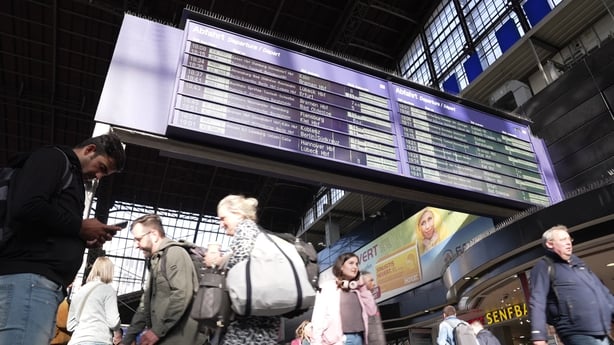
Having disappeared almost completely, Europe’s night trains are enjoying a renaissance, this time largely fuelled by a new demand from those who are more conscious of their environmental footprint.
The night train was once a staple of European travel, but a number of factors pushed it into near obsolescence, including advancements in train technology; high-speed trains have meant that there’s often no need for sleeper trains on certain routes.
Author Mark Smith, who runs the Man in Seat 61 website, told Prime Time that sleeper services fell away almost entirely through the late 1990s and into the early 2000s. The advent of budget airlines provided a cheap and fast alternative. At the same time, many countries separated their track infrastructure and train operations.
"When track and trains were run by the same organisation, they knew perfectly well you could run 21 trains for the same infrastructure price as 20. The extra sleeper train didn't cost anything. Suddenly we've got a great big track access fee hitting the debit side of the balance sheet for sleeper trains. And that was enough to push many of them over the edge."
Sleeper trains are more expensive to run; giving over carriage real estate to beds instead of seats means fewer passengers can travel.
Nevertheless, night trains are making a comeback. In the last year, new sleeper routes have sprung up in Europe. Some provided by existing rail companies, while one new company, European Sleeper, was set up through crowdfunding.
From the political heart of Europe in Brussels, a new route has just opened to Berlin. A route to Vienna opened in 2020. A Hamburg to Stockholm route started in September of last year.
And there are plans for routes from Brussels to Barcelona and Paris in the next few years. The initiative has required the cooperation of multiple European governments and is being supported by the European Commission.
From a starting point in Brussels, we wanted to experience one of the new routes for ourselves. The services to Vienna and Berlin only run on certain days of the week so instead we leave Brussels for Cologne and from Cologne head to Hamburg, booking a compartment on the 10pm overnight train to Stockholm.
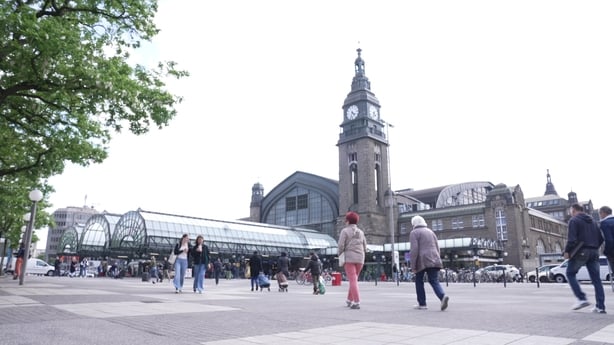
It’s a 12-hour train journey versus a 90-minute flight. A big difference in time, but also a huge difference in carbon emissions.
A recent push to reduce aviation emissions has seen some countries limit short-haul air travel. France recently announced a ban on internal flights in cases where the same journey could be covered by train in two and a half hours or less.
Josh Gabbatiss, policy correspondent with Carbon Brief, told Prime Time that the plan was initially raised in a citizens’ assembly but has essentially been watered down after lobbying from the aviation industry. Adding that it will only affect three key routes, he says, "It’s more of a symbolic move at this stage. We're still a long way from trains entirely replacing these kinds of flights within Europe."
Those hoping for similar measures in other EU countries, may be disappointed. Even in its watered-down state, it’s not a move that has found favour in the European Commission.
European Commission spokesperson on transport Adalbert Jahnz says that "such a ban is also a restriction on the rights of companies to operate in the EU and therefore it has to follow all the European rules to make sure that it is not something that unduly restricts competition or favours certain companies over others."
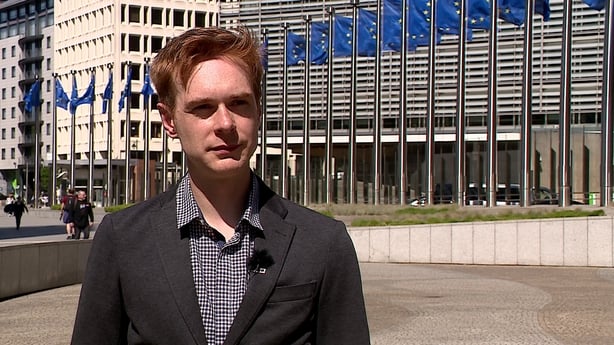
He adds that the Commission has a strategy to decarbonize aviation, a sector that Josh Gabbatiss says is one of the most difficult to decarbonize.
While Gabbatiss says that long-haul flights are responsible for most aviation emissions, replacing short-haul flights with train travel is "low-hanging fruit" that we should be going for while it’s there.
On the night train to Stockholm, our fellow travellers all seem to be driven by that same motivation – to replace their European air travel with train journeys. Sweden is the country where the term ‘flygskam’ or ‘flight shame’ first started.
Fabienne from Lyon says she will have spent 24 hours on trains before she reaches Stockholm, with another 24 hours for the return journey.
"I know I will not save the world, but for my interior peace I try to do some little things," she told Prime Time.
In the adjacent compartment, Felix, a German filmmaker, is travelling to Oslo via Stockholm for his niece’s christening.
"Because of carbon footprint I choose to travel by train – I try not to fly anymore, but it doesn’t always work. I think it’s a growing concern, but most people still do it – they just feel bad about it, but they don’t change yet."
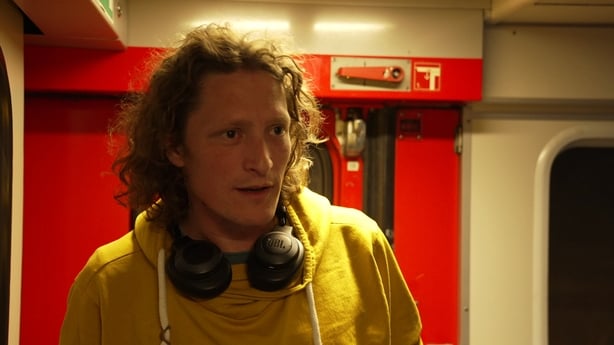
A German couple, Nadia and Jan, are part of a sizable contingent enroute to Stockholm to see German rock band Die Ärzte. They’ve paid €1,000 for the return trip, when flights would have been quicker and less expensive.
"It’s not because it’s cheaper – it isn’t. It’s more, but we do it to minimise our carbon footprint," Jan told Prime Time.
He says that the time it takes to travel by train is best spent sleeping; they’re not losing any time and it allows them to wake up in Stockholm ready to go.
A group of Dutch men in their twenties are visiting a friend who’s moved to Stockholm. They’ve been friends since school, and it was the suggestion of one that they try to do it by train. They decided if one was doing it, they all should do it. They’re sharing a couchette compartment – six of them. The couches they’re sitting on will fold out into beds later that night. They all cite concerns over their carbon footprints and the kind of changes they believe we need to make "because," as one says, "we don’t have a second planet earth."
One says it was great to be able to make a decision that’s "more responsible," but has the added benefit of allowing the group of friends to travel together, play cards and spend time with another. "It’s more cosy like this."
Cosy is one word to describe it. The six Dutchmen are in close quarters. The train is an older model, built for efficiency rather than comfort.

It’s a hot night and the compartment windows don’t open. Nevertheless, there is a certain thrill in falling asleep as the train hurtles through night across the German and Danish countryside.
Just before 5am, we cross the bridge linking Copenhagen and Malmo. The sun has just risen and glints off the bank of wind turbines, standing to attention in the Øresund Strait.
The 12-hour journey becomes 14 and we arrive in Stockholm at midday, meeting Swedish writer and rail advocate Per J Anderson who wrote the book Ta Tåget (Take The Train).
He’s encouraged by the resurgence of Europe’s night trains, but believes that there is still some way to go before modern sleepers can match the romance of the golden era of rail travel.
"Sitting down in a restaurant car, sipping a glass of wine, eating a warm dinner, seeing the landscape passing, that is something which is an experience and an adventure in some ways. I think if you can add a little bit more of that luxury feeling to train travel, I think it will compete with these low-cost airlines."
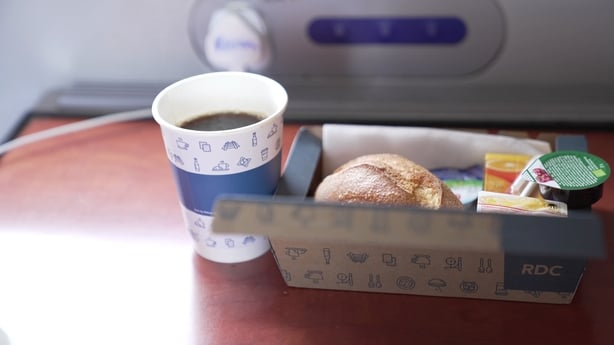
The new night trains routes are already victims of their own success, with some selling out months in advance. There simply aren’t enough trains and carriages to meet even the existing demand. But change is coming according to rail author and blogger Mark Smith.
"The immediate problem is a shortage of serviceable sleeper train rolling stock. Austrian railways are building more - that will release some conventional stock for other routes, but there isn't a lot around to lease for companies that want to start up a new sleeper train."
The combined factors of comfort, cost and availability form a strong barrier to persuading people to switch to night trains from budget flights. Even in the home of flygskam, it’s a transition that’s been slow to happen.
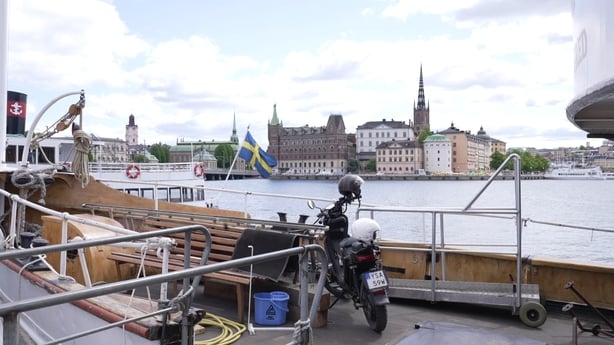
Per J Anderson says that 70% of Swedish fly when going on holiday, compared to 7% who take the train. He says that air travel is still "too cheap" and adds that the EU will be adding additional carbon taxes on aviation in the coming years.
Increased charges for flights could prove difficult for those of us living on an island when any sort of foreign holiday still requires a flight or a ferry.
The future of European travel may well involve some lessons from the past, but availing of it from Ireland will still, for the time being, involve using the transport of the present.
Watch reporter Conor Wilson's Prime Time report on European sleeper trains at 9.35 on RTÉ One.






